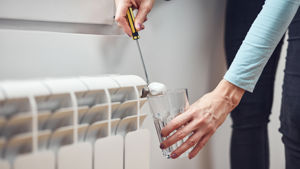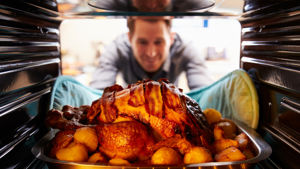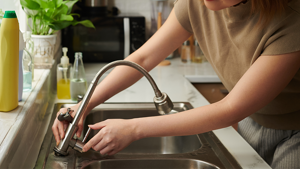Keeping things running smoothly in all areas of your life can reduce worry and even save you money, and the same can be said when it comes to heating. Making sure your radiators work properly improves their overall efficiency and that can really save you money.
But how do you do that? Surely, if they’re warm when you switch the heating on that’s a sign everything is in good working order? The trouble is that’s not always the case.
Regular maintenance of your radiators helps to keep things at optimum efficiency. Now, there’s a few ways to do this, but one of the most important is to make sure you’re bleeding radiators regularly.
Can You Bleed Radiators When the Heating Is On?
You shouldn’t bleed a radiator with the heating on. You do need to turn your heating on during the process to check for cold spots but when it comes to actually bleeding the radiator, the heating should be off.
That’s because you are draining the air out of the radiator to remove any blockages and also loose dirt and grime build up. If the heating is left on, you not only risk scalding yourself, you might end up with a flood as the water gushes out.
It’s also not an efficient way to bleed radiators. If the water is pumping when you let out the air, it could be counterproductive and actually cause the system to draw in air instead.
Bleeding radiators is often the job that gets put off in homes because people either don’t know how to do it or are afraid to give it a go. But it’s actually not as difficult as you might think.
Bleeding radiators - A Guide
Once you have identified which radiators need bleeding, you can go ahead and switch off your heating and wait for them to cool down. Grab yourself a couple of old rags or towels and a container to catch the water.
Using a radiator key (or screwdriver), place it over the bleed screw. You may wish to cover it with an old cloth or towel to protect your hands from any trapped hot air escaping.
Use another cloth or towel to protect the area around the radiator and place a container underneath. Now, turn the key gently anti-clockwise for half a turn until you hear the air releasing - this will sound like a hissing. During this process, there should be some excess water that will slowly trickle into the container.
After the hissing stops and the air is released, you have finished. You can now tighten the screw again. Turn your heating back on and check that the radiator is heating up evenly.
If there are still cold spots, then you might have to perform a power flush which removes stubborn rust and dirt particles that build up inside the radiator system creating a sludge.
If you’re still not sure whether to give it a try, ask a friend or neighbour or your local plumber to help. In any case, don’t put it off as you risk bigger damage and more expensive fixes further down the road.
Remember, you also have to bleed any towel radiators that are plumbed to your central heating in the same way.
How Often Should You Be Bleeding Radiators?
If you are hearing strange gurgling or banging noises then that’s a good sign you should bleed your radiators. But, you should look to bleed your radiators at least once a year at the end of summer to prepare for the colder months of the year.
Find out more in our detailed guide: How (and Why) to Bleed a Radiator.
Keeping on top of bleeding radiators and aware of how they are running means your heating system will work more efficiently and that’s going to save you money. Sometimes, it might be that a new radiator is the best option to improve your heating - and we can certainly help with that.








